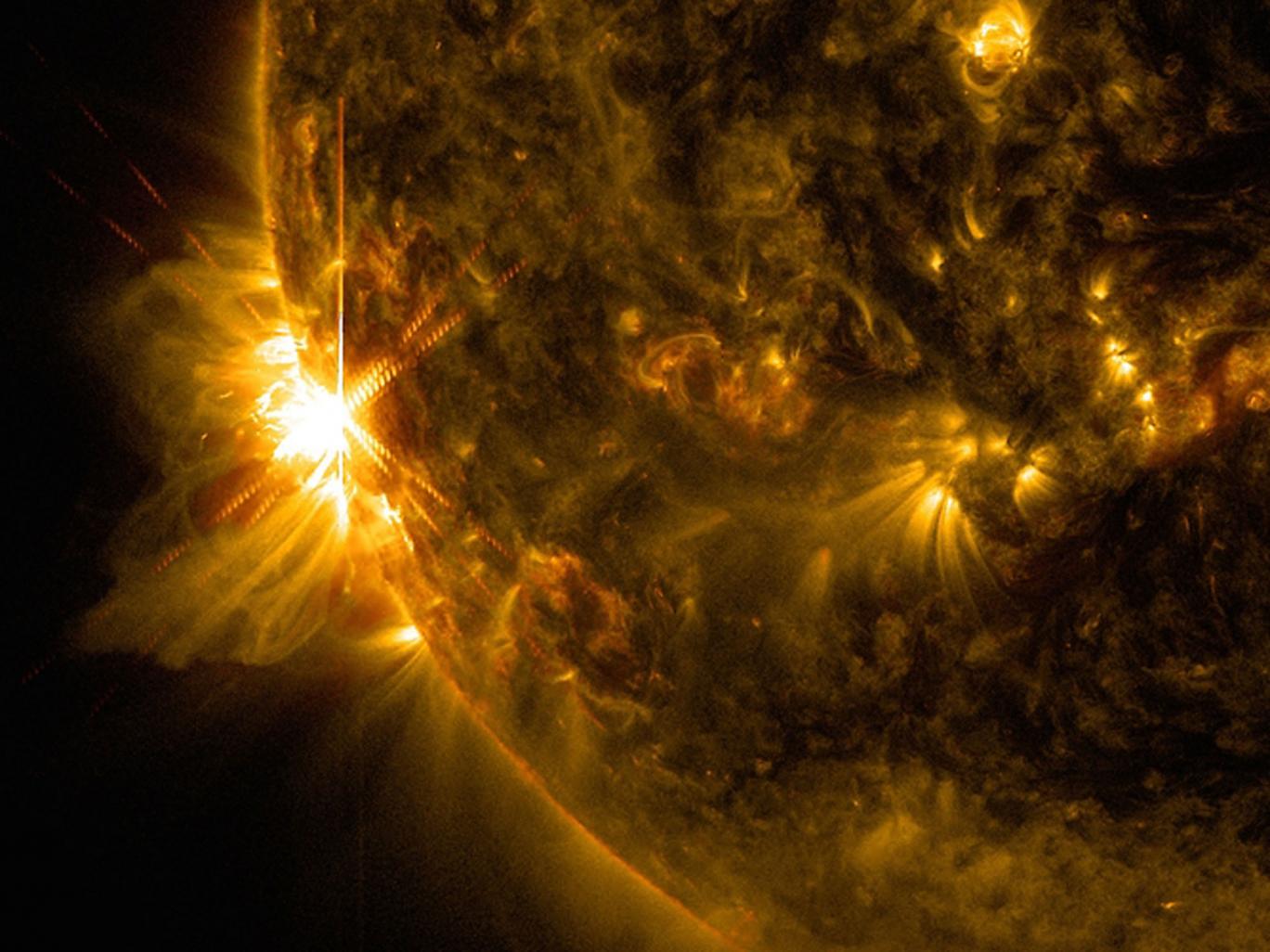Scientists spot new, huge energy waves coming out of the Sun
The particles could provide a clean fuel source in the future, experts hope, but we won’t get a chance to get another look at them for a while

Scientists have seen huge, extra-powerful particles shooting out of the sun, in what they have described as a brand new solar phenomenon.
Researchers have for the first time ever spotted what they describe as “large-scale” waves being thrown out of the sun, together with energetic particles that seem to be thrown out by the waves. The scientists have long known that such particle emissions were happening — but couldn’t explain how they were making their way into space.
The sun is continually throwing out huge, violent bursts of emissions into space. Some of those are well-known, such as coronal mass ejections, but the new waves are of a new and are little understood.
"The new phenomenon is like a kind of explosion,” said Radoslav Bucík, who led the research team.
Those waves are likely bringing with them particle flows that are much more rich in a light form of helium, helium-3, than normal.
“We believe that the blast waves accelerate the helium-3”, Davina Innes, from the Max Planck Institute for Solar System Research (MPS), said in a statement.
"Our analysis shows that typical characteristics of the waves, such as their energy, influence the properties of the particles”, colleague Lijia Guo, who also stationed at the MPS, said.
Helim-3 is a light, non-radioactie isotope of helium. It’s very useful and rare on Earth, but there is lots of it in space, including on the moon.
The researchers think that the events might happen fairly often. But because of the arrangement of the sun and the Earth, scientists aren’t likely to get another look for a decade.
The waves were found in data that was collected in early 2010. The data came from STEREO A, one of two space probes launched in 2006 that circle the sun in opposite directions, and a Nasa spacecraft called Advanced Composition Explorer, which watches the sun from near Earth.
The research, titled ‘Observations Of Euv Waves In 3he-Rich Solar Energetic Particle Events’, is published in The Astrophysical Journal this month.
Subscribe to Independent Premium to bookmark this article
Want to bookmark your favourite articles and stories to read or reference later? Start your Independent Premium subscription today.

Join our commenting forum
Join thought-provoking conversations, follow other Independent readers and see their replies